The Toshiba OCZ RD400 (256GB, 512GB, 1TB) M.2 PCIe SSD Review
by Billy Tallis on May 25, 2016 8:02 AM ESTAnandTech Storage Bench - The Destroyer
The Destroyer is an extremely long test replicating the access patterns of very IO-intensive desktop usage. A detailed breakdown can be found in this article. Like real-world usage and unlike our Iometer tests, the drives do get the occasional break that allows for some background garbage collection and flushing caches, but those idle times are limited to 25ms so that it doesn't take all week to run the test.
We quantify performance on this test by reporting the drive's average data throughput, a few data points about its latency, and the total energy used by the drive over the course of the test.
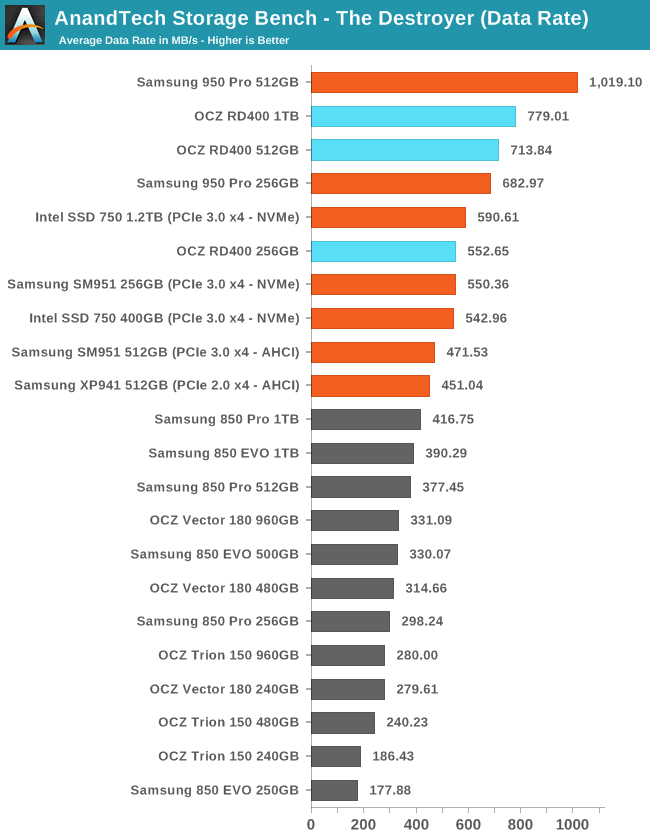
The OCZ RD400 can't keep pace with the Samsung 950 Pro on The Destroyer, but otherwise it beats or ties the other PCIe drives and is substantially faster than any SATA drive.
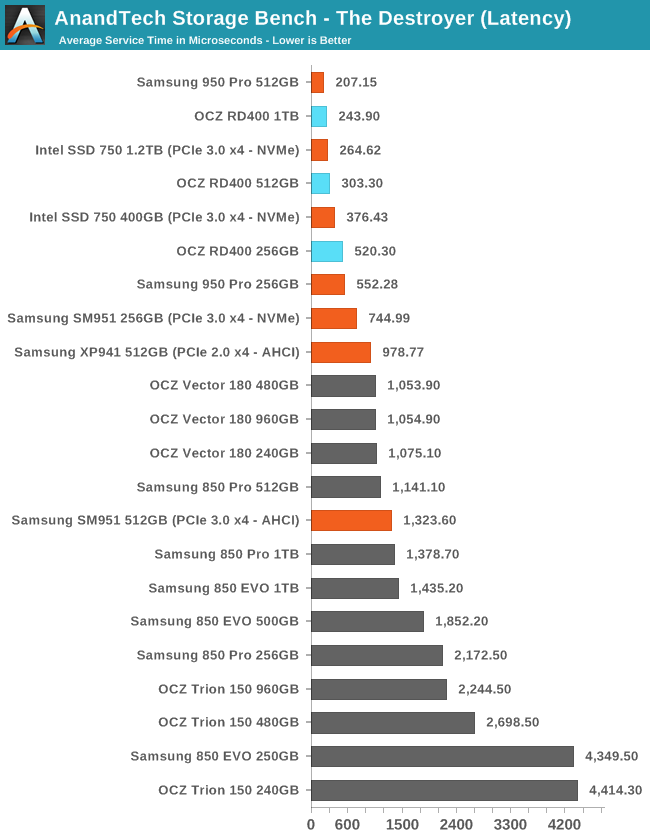
All three RD400 capacities deliver an average service time that falls between the scores of the two 950 Pro capacities. Even the 256GB RD400 almost halves the latency of the best SATA drives.
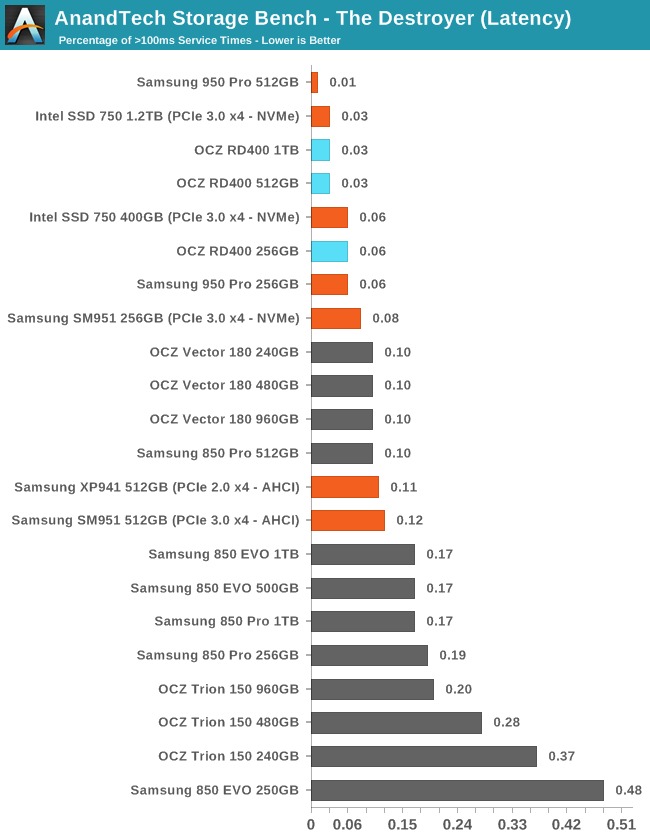
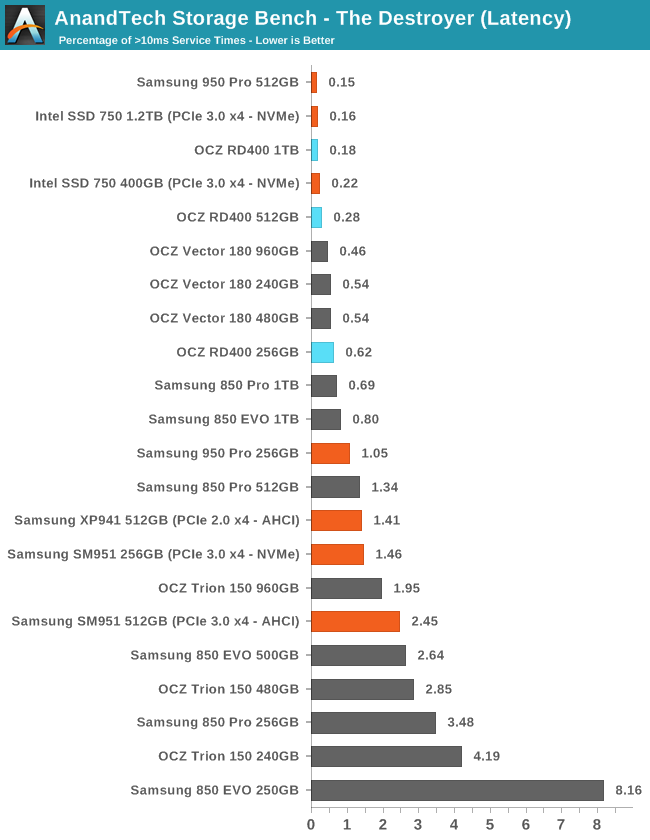
The NVMe drives top the charts for having an extremely low number of severe latency outliers in excess of 100ms, but the 512GB 950 Pro is still clearly the best performer. The NVMe drives are not all clear winners when looking at the number of latency outliers in excess of 10ms: the 256GB RD400 falls behind the Vector 180 and the 256GB 950 Pro is even further behind.
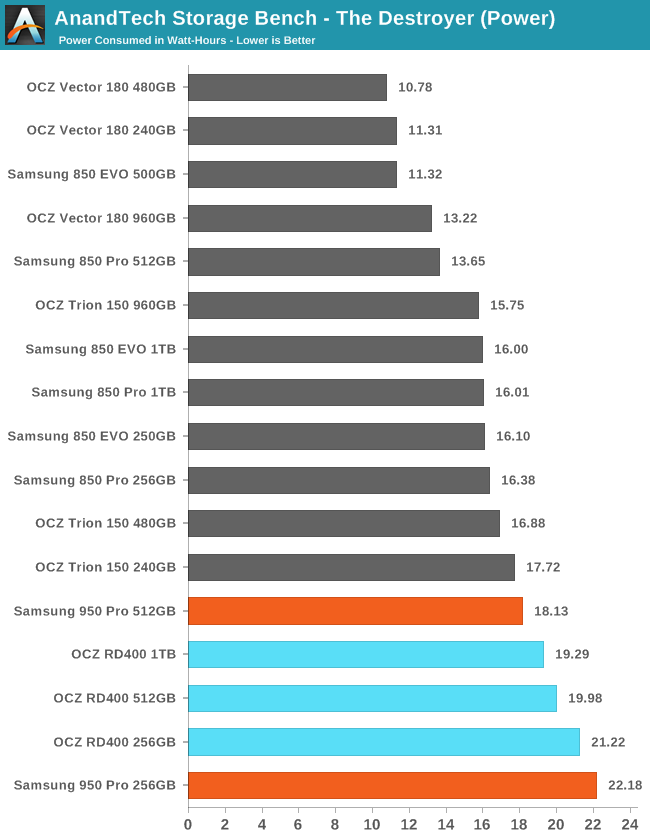
High performance usually carries some cost of high power consumption. The PCIe drives complete The Destroyer far quicker than any of the SATA drives but use more energy overall, and the RD400 falls in between the two capacities of the Samsung 950 Pro.










40 Comments
View All Comments
Meteor2 - Thursday, May 26, 2016 - link
So are we saying NVMe is only really useful for enterprise applications? There just aren't consumer use cases where drive speed is now the limiting performance factor?stux - Thursday, May 26, 2016 - link
This might be the case in Windows, but I've found with OSX, one of the biggest upgrades has been sata3 to PCIe ssd gen 1 to 2 and then 3Ien 0.5 to 1 to 2GB/s
This was evident with all the recent MacBook Pro 15" upgrades and also with PCIe ssds in some Mac Pro towers.
SunnyNW - Wednesday, May 25, 2016 - link
Is the flash controller made on the same memory process or is it made on a separate logic process? I think its made on a separate (logic) process and if so would that be 28nm for most controllers? And is the manufacturing out sourced to TSMC or in-house for most?Ryan Smith - Wednesday, May 25, 2016 - link
Controllers are made on a separate logic process.Kristian Vättö - Thursday, May 26, 2016 - link
The PCIe NVMe controllers are mostly 28nm from what I've heard. SATA controllers can be anything from 40nm to +55nm. Like nearly all logic manufacturing, it's outsourced to TSMC and the like.BangkokTech - Friday, May 27, 2016 - link
Recently got the SM950 pro 512. Large writes slow down after 30 seconds. It starts out ETA 3 minutes, 10 minutes later it's only 70% complete. I read into it; evidently these M.2 cards heat up and slow down. There is absolutely no heatsink on the card. Running them on a PCI expansion card would allow headspace for small heatsinks.BangkokTech - Friday, May 27, 2016 - link
Are any of you aware of a ribbon cable/riser cable I could use to get this M.2 card off my motherboard and move it to a cooler part of my case? I'm out of PCI slots for these expansion cards.Billy Tallis - Saturday, May 28, 2016 - link
Even with the degree of thermal throttling I've observed when not using any kind of heatsink, the 512GB Samsung 950 Pro should only take ~12-13 minutes to fill to capacity with sequential writes. I suspect that your bottleneck is whatever is the source of the data being written, not the 950 Pro.BiTesterEmailer - Wednesday, July 20, 2016 - link
Informative and detailed as always.